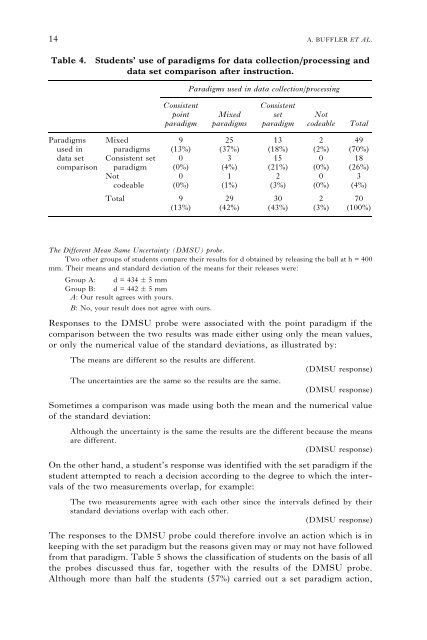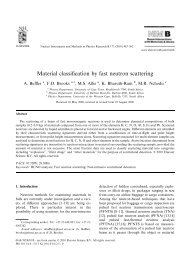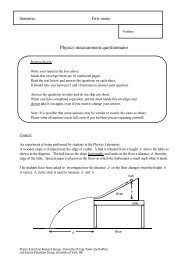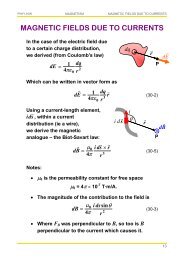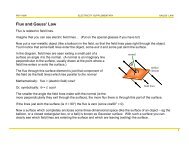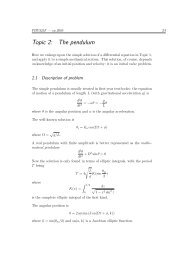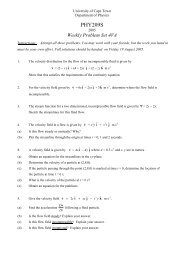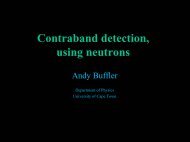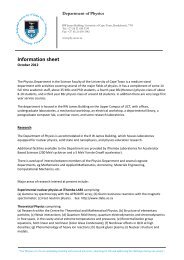ideas about measurement in terms of point and set paradigms
ideas about measurement in terms of point and set paradigms
ideas about measurement in terms of point and set paradigms
You also want an ePaper? Increase the reach of your titles
YUMPU automatically turns print PDFs into web optimized ePapers that Google loves.
14 A. BUFFLER ET AL.<br />
Table 4.<br />
Students’ use <strong>of</strong> <strong>paradigms</strong> for data collection/process<strong>in</strong>g <strong>and</strong><br />
data <strong>set</strong> comparison after <strong>in</strong>struction.<br />
Paradigms used <strong>in</strong> data collection/process<strong>in</strong>g<br />
Consistent<br />
Consistent<br />
po<strong>in</strong>t Mixed <strong>set</strong> Not<br />
paradigm <strong>paradigms</strong> paradigm codeable Total<br />
Paradigms Mixed 9 25 13 2 49<br />
used <strong>in</strong> <strong>paradigms</strong> (13%) (37%) (18%) (2%) (70%)<br />
data <strong>set</strong> Consistent <strong>set</strong> 0 3 15 0 18<br />
comparison paradigm (0%) (4%) (21%) (0%) (26%)<br />
Not 0 1 2 0 3<br />
codeable (0%) (1%) (3%) (0%) (4%)<br />
Total 9 29 30 2 70<br />
(13%) (42%) (43%) (3%) (100%)<br />
The Different Mean Same Uncerta<strong>in</strong>ty (DMSU) probe.<br />
Two other groups <strong>of</strong> students compare their results for d obta<strong>in</strong>ed by releas<strong>in</strong>g the ball at h = 400<br />
mm. Their means <strong>and</strong> st<strong>and</strong>ard deviation <strong>of</strong> the means for their releases were:<br />
Group A: d = 434 5mm<br />
Group B: d = 442 5mm<br />
A: Our result agrees with yours.<br />
B: No, your result does not agree with ours.<br />
Responses to the DMSU probe were associated with the po<strong>in</strong>t paradigm if the<br />
comparison between the two results was made either us<strong>in</strong>g only the mean values,<br />
or only the numerical value <strong>of</strong> the st<strong>and</strong>ard deviations, as illustrated by:<br />
The means are different so the results are different.<br />
The uncerta<strong>in</strong>ties are the same so the results are the same.<br />
(DMSU response)<br />
(DMSU response)<br />
Sometimes a comparison was made us<strong>in</strong>g both the mean <strong>and</strong> the numerical value<br />
<strong>of</strong> the st<strong>and</strong>ard deviation:<br />
Although the uncerta<strong>in</strong>ty is the same the results are the different because the means<br />
are different.<br />
(DMSU response)<br />
On the other h<strong>and</strong>, a student’s response was identified with the <strong>set</strong> paradigm if the<br />
student attempted to reach a decision accord<strong>in</strong>g to the degree to which the <strong>in</strong>tervals<br />
<strong>of</strong> the two <strong>measurement</strong>s overlap, for example:<br />
The two <strong>measurement</strong>s agree with each other s<strong>in</strong>ce the <strong>in</strong>tervals def<strong>in</strong>ed by their<br />
st<strong>and</strong>ard deviations overlap with each other.<br />
(DMSU response)<br />
The responses to the DMSU probe could therefore <strong>in</strong>volve an action which is <strong>in</strong><br />
keep<strong>in</strong>g with the <strong>set</strong> paradigm but the reasons given may or may not have followed<br />
from that paradigm. Table 5 shows the classification <strong>of</strong> students on the basis <strong>of</strong> all<br />
the probes discussed thus far, together with the results <strong>of</strong> the DMSU probe.<br />
Although more than half the students (57%) carried out a <strong>set</strong> paradigm action,


